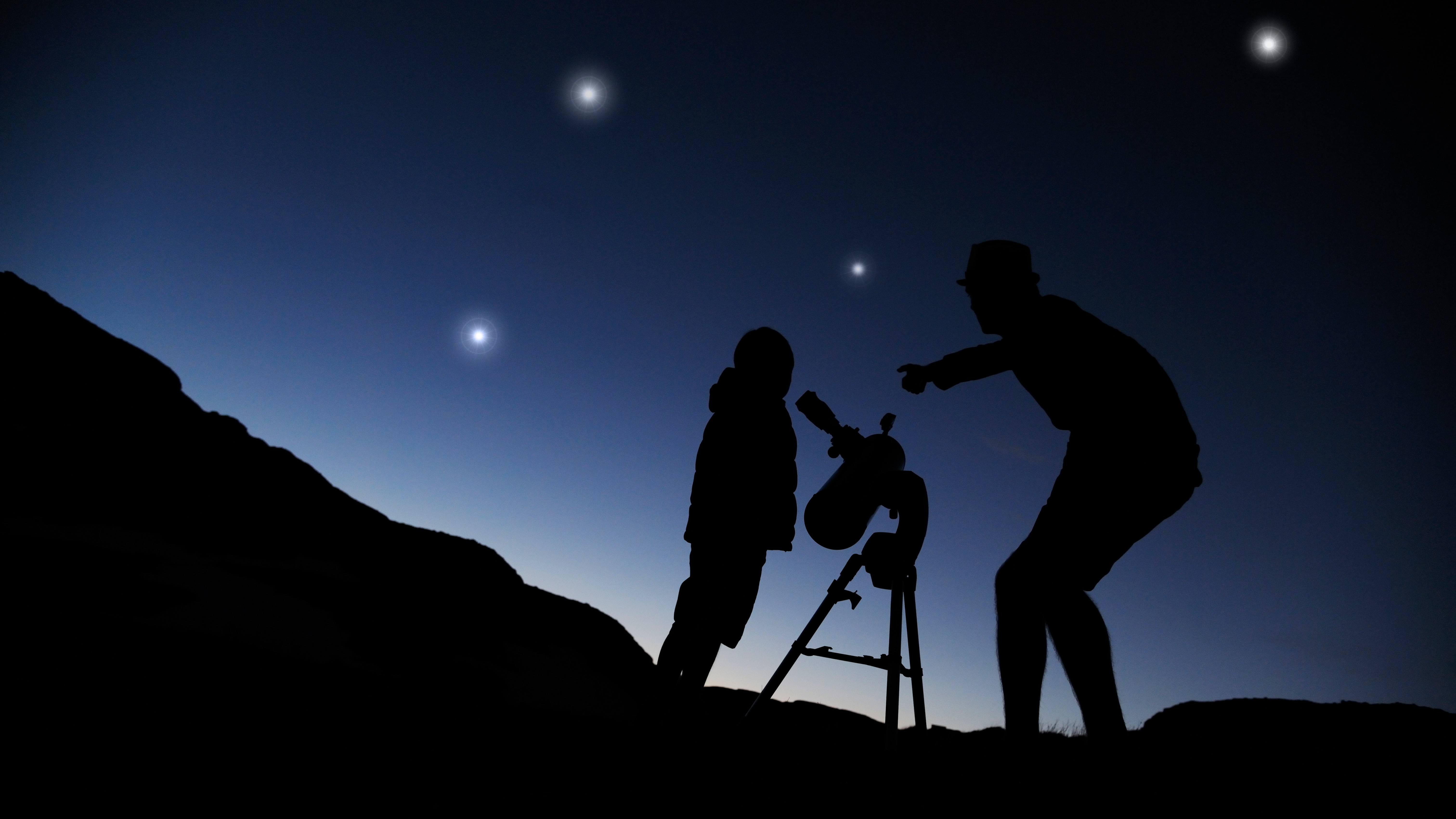Mars' oldest meteorite traced to strange double impact crater
The meteorite is just under 4.5 billion years old

Researchers have traced the oldest known Martian meteorite to its exact origin point using artificial intelligence (AI), and the findings could help reveal what conditions on our solar system's planets were like during their very first days.
The 11-ounce (320 grams) meteorite, officially dubbed Northwest Africa 7034 but commonly known as "Black Beauty," is believed to have smashed into Earth roughly 5 million years ago. After being found in the Sahara Desert in 2011, its age was dated to just under 4.5 billion years old — making it the oldest Martian meteorite ever found on Earth.
Scientists believed the meteorite was launched to Earth after a powerful asteroid impact struck Mars, ripping up parts of the planet's crust and sprayed them into space. Now, using a machine-learning algorithm to identify and catalog 94 million craters on Mars, researchers have traced Black Beauty's origin to a small crater within a crater in the Martian southern hemisphere. The scientists named the crater Karratha after the Australian mining town where many of Earth's oldest rocks have been found. They published their findings July 12 in the journal Nature Communications.
Related: Giant reservoir of 'hidden water' discovered on Mars

"Finding the region where the 'Black Beauty' meteorite originates is critical because it contains the oldest Martian fragments ever found, aged at 4.48 billion years old, and it shows similarities between Mars' very old crust, aged about 4.53 billion years old, and today's Earth continents," lead-author Anthony Lagain, a planetary scientist at Curtin University in Perth, Australia, said in a statement. "The region we identify as being the source of this unique Martian meteorite sample constitutes a true window into the earliest environment of the planets, including the Earth, which our planet lost because of plate tectonics and erosion."
To identify the meteorite's starting point, researchers fed images of 94 million Martian craters taken by Mars Reconnaissance Orbiter's context camera into a machine-learning algorithm. The AI cross-referenced the size and distribution of the craters with the material properties of the stray meteorite — which has some of the highest concentrations of potassium and thorium of any Martian meteorite found on Earth, and is one of the most magnetized. This narrowed down the list of possible craters to 19, one of which stood out to the team because it closely matches the chronology of the Martian impact and the meteorite's properties.
By studying the impact crater, the scientists found that Black Beauty was sent to Earth thanks to two asteroid impacts. The first — which slammed into Mars and formed the 25-mile-wide (40 kilometers) Khujirt crater roughly 1.5 billion years ago — violently ripped Black Beauty and other rocks from the Martian crust, sending them high into the atmosphere before they rained back down onto the Red Planet's surface. Then, after 5 to 10 million years of respite, a second impact sent Black Beauty flying through space towards Earth and left behind the Karratha crater inside the Khujirt crater.
Get the world’s most fascinating discoveries delivered straight to your inbox.
The findings suggest the rock was once part of Mars' primordial crust — the Red Planet's original crust that formed soon after its magma ocean cooled and solidified. As plate tectonics destroyed Earth's primordial crust, and the original crust of the moon is buried under thousands of meters of moon dust, this makes the crater especially exciting to scientists who want to study how the bodies of our solar system first formed.
The algorithm could not only locate the ejection sites of other Martian meteorites, the researchers say they also want to adapt their algorithm to perform similar searches across the moon and Mercury.
"This will help to unravel their geological history and answer burning questions that will help future investigations of the Solar System such as the Artemis program to send humans on the Moon by the end of the decade or the BepiColombo mission, in orbit around Mercury in 2025," co-author Gretchen Benedix, a planetary scientist at Curtin University said in the statement.
Originally published on Live Science.

Ben Turner is a U.K. based writer and editor at Live Science. He covers physics and astronomy, tech and climate change. He graduated from University College London with a degree in particle physics before training as a journalist. When he's not writing, Ben enjoys reading literature, playing the guitar and embarrassing himself with chess.


